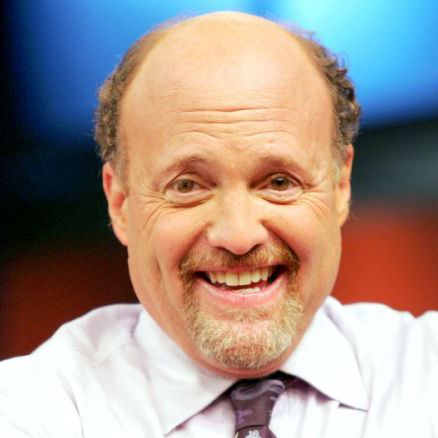We learn from the great.
No, scratch that. We need to learn from the great, if we ever want to achieve anything in any endeavor.
The investment world—a non-forgiving environment, where mistakes are scrutinized and missteps are highly publicized—has many “Big Money” favorites—including Ray Dalio, Carl Ichan, Leon Black, and Bill Ackman.
But the all-time favorite is Warren Buffett.
Long ago crowned “the greatest investor of all time,” Buffett earned this title by being smart, shrewd, consistent, and opportunistic.
In 1965, Buffett took control of a struggling textile maker, Berkshire Hathaway (BRK-A, BRK-B). He had a relatively simple idea: to turn the company into both a business and an investment firm.
As opposed to holding cash, Berkshire owns a portfolio of companies. It’s a mutual fund of sorts—one where Buffett makes most of the decisions. It’s also a leading insurance company and a business conglomerate.
Steady through thick and thin, Berkshire has massively outperformed the market over the past two decades (up 432% vs. the market’s 127%).
Yes, it’s been lagging the S&P 500 this year… but this was to be expected. Berkshire’s value-tilted portfolio tends to underperform when tech stocks are in favor.
But Buffett has always come back… with a vengeance.

Just like all of us, Buffett’s human. He makes mistakes…
His long-time investment in Wells Fargo (WFC) is one example. Not only is the stock underperforming—trading at levels not seen since 2012—its dividends have been cut by 80%.
But regardless of Buffett’s mistakes, we can’t help but follow his every stock-market decision.
And we can learn about his take on the market (and his outlook) by watching his largest bets and latest moves…
Below is a table of the 10 largest BRK-A holdings… together with an indication of just how much of that particular company Berkshire owns.
| Name and Symbol | Price | Yield | Stake in the Company |
|---|---|---|---|
| Apple (AAPL) | $381.67 | 0.8% | 5.8% |
| Bank of America (BAC) | $25.27 | 3.0% | 11.5% |
| Coca-Cola (KO) | $48.19 | 3.4% | 9.3% |
| American Express (AXP) | $96.70 | 1.8% | 18.8% |
| Kraft Heinz (KHC) | $35.65 | 4.5% | 26.7% |
| Wells Fargo (WFC) | $25.76 | 1.6% | 8.4% |
| Moody’s (MCO) | $291.14 | 0.8% | 13.2% |
| JPMorgan Chase (JPM) | $99.55 | 3.7% | 1.9% |
| U.S. Bancorp (USB) | $37.72 | 4.6% | 9.9% |
| DaVita (DVA) | $91.54 | 0.0% | 31.3% |
| Average | — | 2.4% | — |
This list is as current as possible. And while there’s always a possibility that a change—a position increase or decrease—has been made, this data tells us a lot about Big Money thinking in one of the weirdest markets ever.
Lesson 1: Quality matters
It’s obvious that Buffett remains a fan of big banks. But his focus has changed. While he’s been trimming his positions in Wells Fargo, Bank of New York, and U.S Bancorp, he added more to his holdings in JPMorgan and Bank of America, the two largest financial institutions in the country based on assets held.
These two banks have largely avoided costly missteps and scandals. They’re now leading the banking industry in their ability to lend… and they’ll likely benefit from their dominance.
Lesson 2: Diversify
Even for a Big Money investor who can take a large stake in a leading business, simply raising the stake in a few select companies isn’t the answer. Buffett knows the merits of diversification… and his top 10 positions have certainly shown it.
For instance, even though he clearly likes financial companies (6 out of 10 hail from the sector), the positions are spread across the four banks, a credit card and payment network business (American Express), and a credit rating company (Moody’s).
Lesson 3: Invest for the long haul
By his own words, Buffett’s ideal holding period is forever.
If we compare Berkshire’s top 10 holdings today to its largest positions 15 years ago, there are several overlapping names, including Coca-Cola, Wells Fargo, Moody’s, and American Express.
Lesson 4: Don’t forget about dividends
Nine out of the Buffett’s top 10 holdings are dividend-paying stocks, with an average yield of 2.4% (even after Wells Fargo’s recent dividend cut).
Dividends provide income, which helps investors weather economic and market downturns. Dividend-paying companies are generally profitable, and can deliver a steady revenue stream… just what you want in a difficult environment.
Lesson 5: When it comes to dividends, less can be more
The stocks in Buffett’s top 10 don’t yield more than 4.6%.
Wells Fargo did… But its sector-beating yield (8% at the end of June) was a sign of trouble brewing.
Markets often sense future trouble (including unsustainable dividends) and respond by bidding the share price down. A lower share price has the side effect of an increased yield—which might seem appealing… until a cut, or even a dividend termination, comes along.
Plus, a company that pays an outsized dividend (compared to its peers) may be stretching its resources too thin—another reason to be careful.
If you’re a dividend investor, you’ll have a much better chance with a company that can afford its dividend—and, more importantly, can afford to grow it by increasing revenues and profits. This is the type of company Buffett tends to select… and so should we.
This may be the most important lesson of all.
But don’t ignore the rest. They show us that Buffett remains an optimist… and very much in favor of dividend and value investing.
Editor’s Note:In the last few months, billionaires like Buffett & Dalio have quietly poured a collective $1 billion into a small pool of income-generating assets… the same type of assets you’ll have access to as a member of Genia’s new income advisory, Unlimited Income.
Eight out of nine Unlimited Income recommendations are already up—many by double-digits! Plus, members get Genia’s exclusive guide to diversifying like a Big Money investor: Bulletproof income: How to diversify the right way.
This service is one of the best ways to secure steady income in today’s zero-rate environment. And for a limited time, Frank’s giving Curzio subscribers an incredible discount—risk free.























